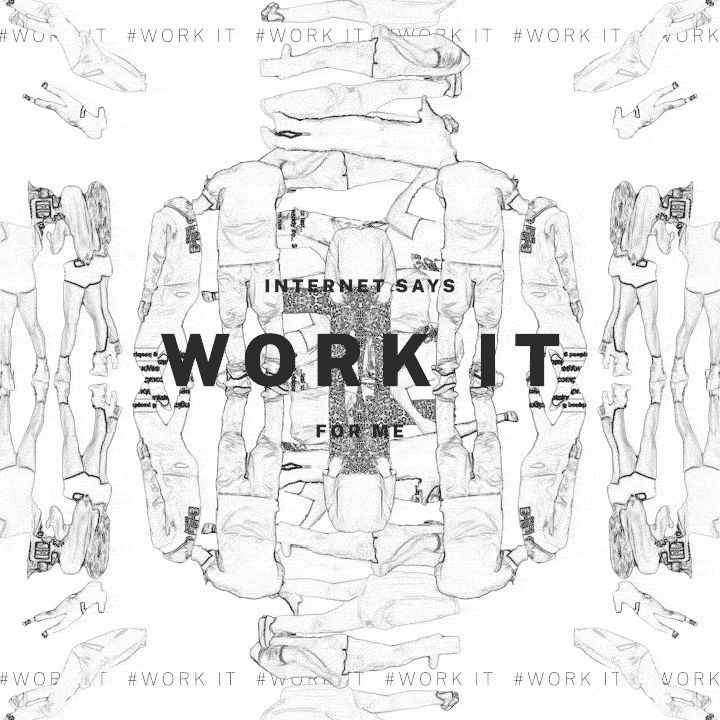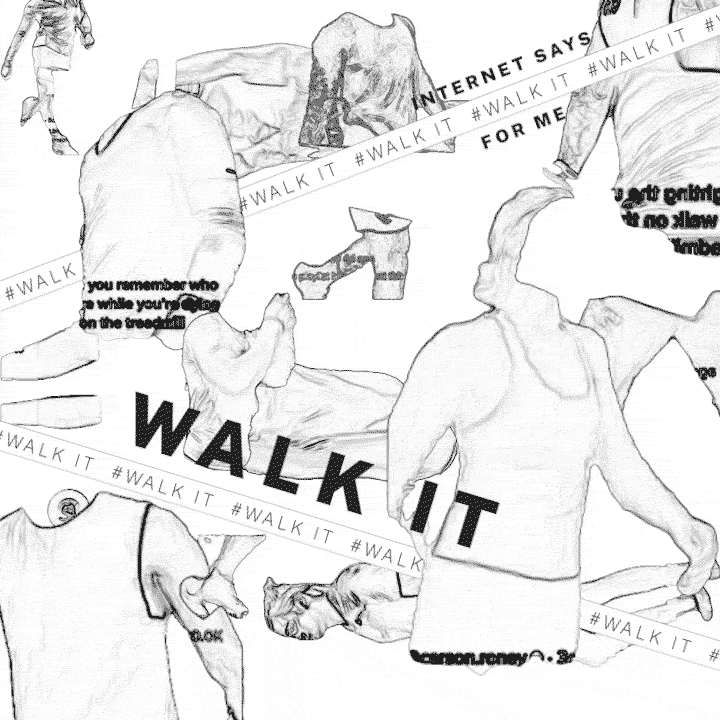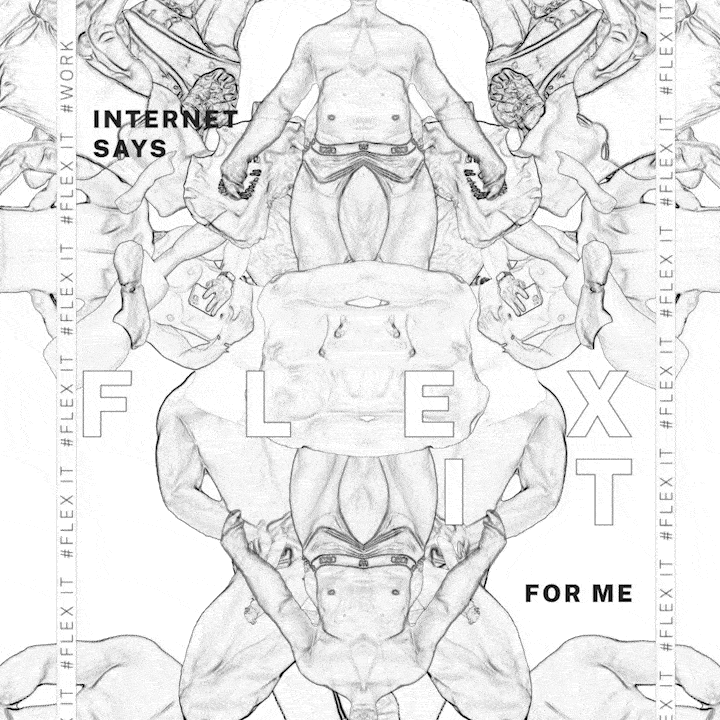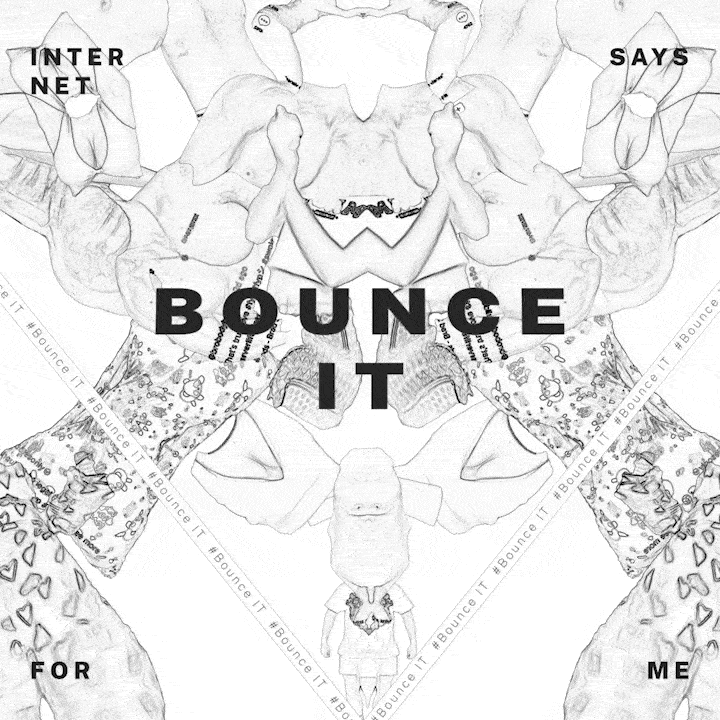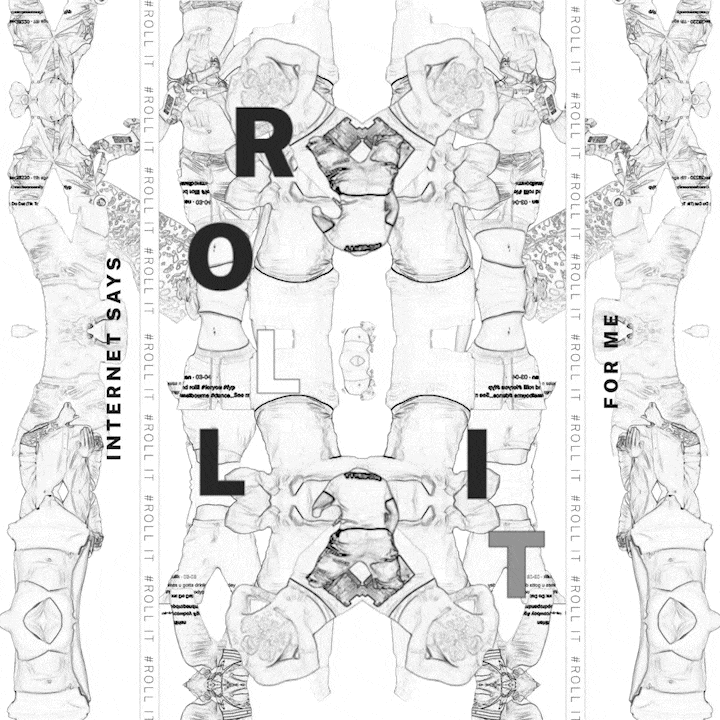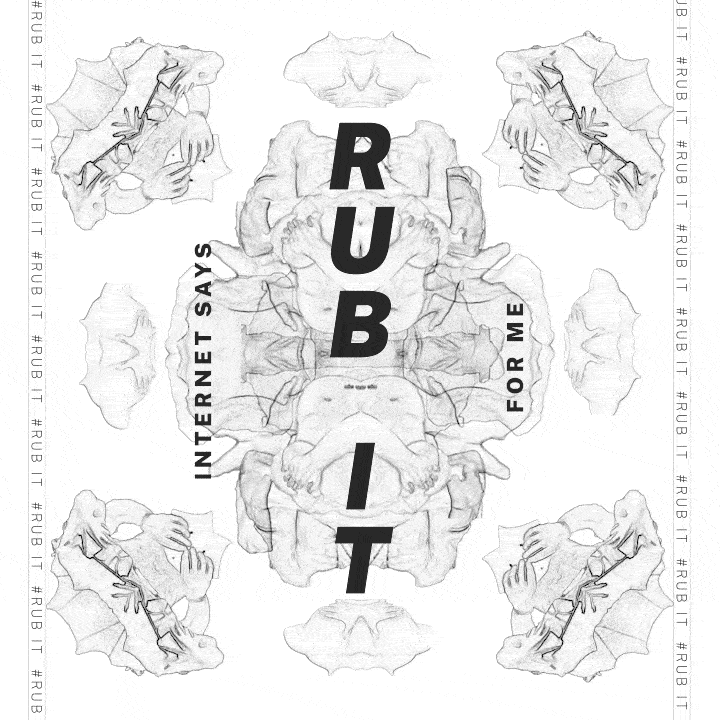Work It (2022-2024)Work It is a series of GIFs created with different bodies performing the same act. Depict the urge to perform and the compulsion to see the new, but eventually only produce variations of the same. These bodies become gears, engines, and fuel to the never-stopping digital content production. They lure us with glamor, vitality, and positivity like propaganda or ads. The project was developed during the research Initiative hosted by Trinity Square Videos and The Digital Justice Lab from 2021-2023, resulted a series of gifs accompanied with the essay titled, Bodies, Bodies, Performative Digital Bodies (2022).
Work It, Walk It, Flex It, Strip It
Bounce It, Twerk, Roll It, Sway It Jump It, Lift It, Bend, It, Stretch It Dive It, Pose It, Spin It, Smash It Smile It, Pout It, Wink it, Lick It Clap It, Slap It, Cry About It Grab It, Rub It, Tap It, Pinch It, Slide It, As if you can touch It NOW, LOOK AT ME, NOW, LOOK AT ME, PERFORM IT FOR ME. - Reinterpretation of lyrics from the song “Technologic” by Daft Punk (2005) In the early 2000s, I remember how the web pages I had visited were plain and dry due to the poor design and lack of content like the old yahoo page in 1999. Somehow, that never discouraged me from exploring more of these pages. The early-day digital experience was an odd balance of accessing information that was packaged in between the boring web design and the flashy popup ads for Viagra and penis enlargement. Now, living in the contemporary digital network means being surrounded by “certain objects” like seeing various performative bodies––from influencers to everyone we know––on social media, overcrowded on our newsfeeds and yet helplessly dull. Even experiencing pleasure whenever we’re online leaves us with the bitter aftertaste of guilt. Our minds tell us to stop, yet our fingers continue with the scrolling motion. Therefore it’s tricky to describe the current digital experience, as it’s just as difficult to articulate what we are to each other, let alone even make sense of how that experience affects who we are becoming. The digital space contains many bodies to focus on at once, creating too much noise. If philosopher Yves Citton is right about how my digital encounters with objects “constitutes ‘my experience’ of the world,” (Citton, 2021, 125), then perhaps we can better understand the digital space by carefully observing these bodies on our screens. Social media feels like a meat market with different bodies available to us at our disposal. The “immediate contact between image and eye” accelerates the exchange of information and gratification of desires (Han, 2018, 38), all of which could be fascinating, luring, overwhelming, and then distressing to us. As we scroll through applications like TikTok and Instagram, we see all kinds of bodies; some are bare and smooth without any resistance, others are tall, short, straight, queer, muscular, soft, hairy, smooth, and everything in between. Regardless of what these bodies look like to us, they are full of actions and agency. These performative digital bodies aim to express and capture our attention, but it’s transactional. They hold no soul or care. They flex, bend, jump, shake, exuberate with vitality, and are constantly erect. We idly watch in front of the screen, prompted to engage with the bodies we choose to fulfill our desires. In electronic duo Daft Punk’s song, “Technologic” we celebrated technology through a series of optimization-friendly verbs in the early 2000s: “Buy it, use it, break it, fix it, trash it, change it, mail, upgrade it.” We were excited about the new possibilities of using technology as a tool to enrich our everyday lives. Fast forward to 20 years later, it seems as if we are now imprisoned by technology—posting, liking, and commenting as a form of duty in order to remain visible to our network rather than for genuine communication. We are no longer the smart people operating the machine but the performers occupied by the smart machine, labouring for the Internet efficiently, spontaneously, and tirelessly until we give in to exhaustion. To cope with our ever-intensified attention economy, we again optimize our bodies and minds in ways that are unclear as to whether or not they are enhanced or reduced. I cannot help but question if technological advancements truly make us harder, better, faster, stronger as we had first believed two decades ago. Perhaps it simply makes us tired, aloof, and superficial? To accommodate the fast-paced digital culture and the more information-rich online economy, bodies go through a series of “thresholds, filters, and portals which affect a preselection of the information” to be reachable (Citton, 55). We constantly dissect ourselves with labels and hashtags, grinding our identities to formulate a hybrid form that appeals to the market based on Google Analytics. This hybridization does not create superhumans or enhance performance. Instead, an ultimate mesh of likable qualities, niches and gimmicks only result in mediocrity. Like German filmmaker and artist Hito Steyerl’s description of Spam, these qualities seem seriously lacking in substance, “... an uncanny mix between the natural and synthetic. It is both organic and deeply inauthentic, an industrial product with some remnants of nature in it” (Steyerl 105). Besides the visual resemblance of our physical bodies, these digital bodies are customized for particular market needs, audience engagement and virality. Performing the same actions repeatedly, like twerking, bouncing, and flexing demonstrates the contemporary producer’s urge to be seen and the consumer’s compulsion to see the new content but only encourages variations of the same coming from the former. These variations are the “pointless repetition,” hoping “to extract a tiny spark of value lying dormant within inert audiences” (105). The soulless bodies are similar to canned spam in that they are not prepared with thoughts and care like a homemade meal, but quick rations that contain little to none nutrition values but are temporarily fulfilling. The lack of care in this attention game may be why we see digital bodies so often yet barely know the people who inhabit them. Even so, these people fulfill our desires online, but we never think of them after the screen turns black. We are constantly in the centre of the battlefield fighting over attention and fulfillment of desires as both producers and consumers. That is why our digital experience can be so exhaustive and violent. Since digital spaces are now dominated by capitalist exploitation, “which seeks to submit attentional flows to needs and desires that will maximize financial returns,” we work tirelessly like a bot for the attention economy only to feast on non-substantial content as we turn our bodies into consumable Spam, incapable of bridging connections, expressing care, or sustaining for long (Citton, 73). The mantra, “I love myself, but I don’t like the way I am,” from American drag queen Trixie Mattel never ceases to be relatable to me because we know we deserve better, but always give in to the pleasure from all the cheap thrills that instant gratification offers. Nonetheless, we are deemed to die out spiritually from this mode of labour without change or resistance. If Spam can be used to create delicacy, then maybe the future of performative digital bodies is not as abysmal as it seems. With the long history of discussion on cyborgs, from the scholar Donna Haraway to Detroit based artist Mother Cyborg, we see the feminist effort to evolve this concept from about physical enhancement to embracing otherness. Perhaps the hybridization of bodies can also be used to enrich our mental strength and adapt to the ever-more technologically advanced society. A “glitched body,” as American curator and writer Legacy Russell articulates in Glitch Feminism, is “a body that defies the hierarchies and strata of logic, it is proudly nonsensical and therefore perfectly non-sense” (Russell, 2020, 169). There are possibilities of liberating the bodies from the labels of social norms, and to instead experiment with whom we can and want to become. A hybrid body does not go through the reduction of social norms for efficient communication and categorization. To accomplish that hybridization, we may need to acquire a hybrid soul matching with the hybrid body from the crystallization of our journey and investigation to know the self, others, and our surroundings. Chinese Philosopher Zengzi once said, “吾日三省吾身,” which means to reflect and examine ourselves daily on three separate matters, social relationships, friendships, and self-development. Zengzi emphasizes a habit of giving a thoughtful look into our actions and behaviors, which can be challenging to execute while being occupied by the attention economy and information overload. We need some glitches, some buffers to make room for reflection and nurture the formation of our hybrid soul. The hybrid soul would provide a sense of control we regain over our bodies. This match would allow us to comfortably navigate digital spaces where being visible and giving our attention remain as our choices instead of coerced ones. Work Cited Citton, Y., & Norman, B. (2021). The ecology of attention. Polity. Okoye, F. (2020, August 4). Decolonising Bots. Bot Club. Retrieved September 9, 2022, from https://botclub.hetnieuweinstituut.nl/en/activities/decolonising-bots Han, Byung-Chul, and Daniel Steuer. Saving Beauty. Polity Press, 2018 Han, Byung-Chul. The Disappearance of Rituals: A Topology of the Present. Polity Press, 2020. Russell, Legacy. Glitch Feminism. Verso Books. Kindle Edition. 2020 Steyerl, Hito. Duty Free Art. Verso Books. Kindle Edition. 2017 Steyerl, Hito. The Wretched of the Screen (e-flux journal Series). Sternberg Press, e-flux. Kindle Edition. 2012 |
Proudly powered by Weebly

